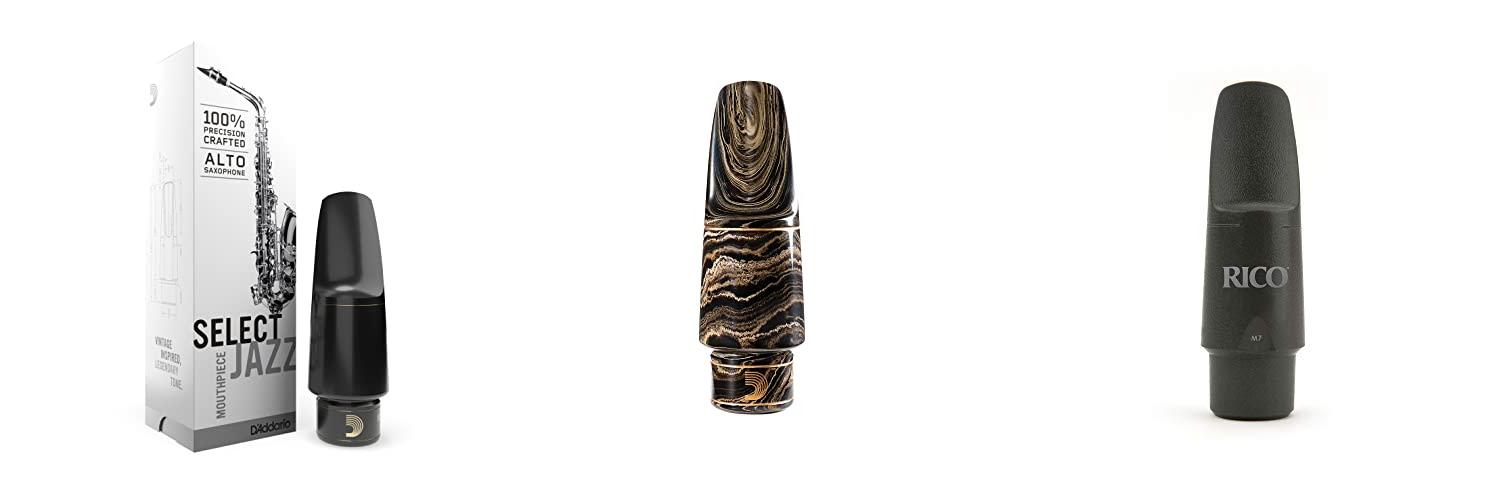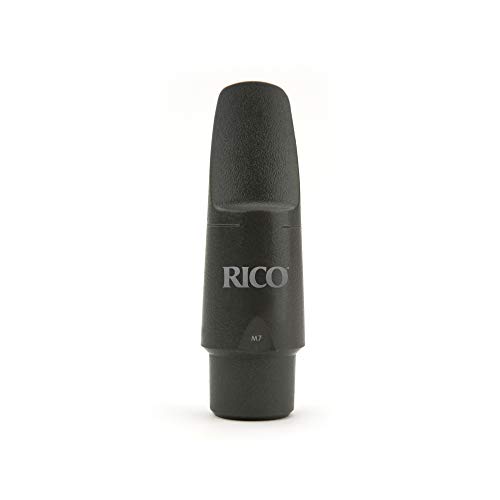Ever wondered why some jazz saxophonists make their horns sing with such rich, expressive sounds? It often comes down to a small but mighty piece of equipment: the alto saxophone jazz mouthpiece. Picking the right one can feel like navigating a maze. There are so many brands, designs, and materials, each promising a different sonic flavor. It’s easy to get lost, spending money on mouthpieces that just don’t unlock the sound you’re dreaming of.
This can be frustrating, right? You want to nail those bluesy bends, soar with those bebop lines, or lay down a smooth ballad. But if your mouthpiece isn’t working with you, it feels like you’re fighting your instrument. That’s where this guide comes in. We’re going to break down what makes a great jazz mouthpiece for alto sax, so you can stop guessing and start playing with confidence.
By the end of this post, you’ll have a clearer understanding of the key features to look for. We’ll explore different tip openings, baffle designs, and materials, and how they all affect your tone. Get ready to discover how the right mouthpiece can transform your playing and bring your jazz aspirations to life. Let’s dive in!
Our Top 5 Alto Saxophone Jazz Mouthpiece Recommendations at a Glance
Top 5 Alto Saxophone Jazz Mouthpiece Detailed Reviews
1. D’Addario Woodwinds Select Jazz Alto Saxophone Mouthpiece
Rating: 9.3/10
The D’Addario Woodwinds Select Jazz Alto Saxophone Mouthpiece, D6M is a top-notch choice for jazz saxophonists. This mouthpiece is crafted with care to give you a classic jazz sound. It’s made for players who want great tone and control.
What We Like:
- It’s made using precise milling, not molding, for a higher quality.
- It gives a classic jazz sound that many players love.
- The intonation is even, meaning your notes will sound right all over your saxophone.
- It offers a classic sound and response, perfect for jazz.
- The medium chambers and facing lengths are a sweet spot for many players.
What Could Be Improved:
- The availability of specific tip openings might be limited at times.
- While it offers a classic feel, some players might prefer a more modern design.
This mouthpiece delivers a fantastic jazz experience for any alto saxophonist. It’s a solid investment for anyone serious about their sound.
2. D’Addario Select Jazz Alto Saxophone Mouthpiece – Sandstone Marble – D5M – Mouthpiece for Alto Sax
Rating: 8.8/10
The D’Addario Select Jazz Alto Saxophone Mouthpiece in Sandstone Marble (D5M) is designed to give alto sax players that classic, beloved sound from jazz legends of the past. It’s made from a special sandstone hard rubber, which gives it a unique feel and helps create a beautiful tone. This mouthpiece is a great way to blend traditional sounds with new ideas.
What We Like:
- Captures the legendary feel and tone of past jazz artists.
- Made from sandstone hard rubber, a blend of tradition and new ideas.
- Medium facing length and chamber size for a balanced sound.
- Comes in various tip opening sizes (5, 6, 7, 8) to suit different playing styles.
- Proudly designed and made in the USA.
What Could Be Improved:
- The “Sandstone Marble” aesthetic might not appeal to everyone.
- Availability of specific tip openings could sometimes be limited.
If you’re looking for a mouthpiece that offers a connection to jazz history with modern craftsmanship, the D’Addario Select Jazz Marble is definitely worth trying. It offers a rich sound and a comfortable playing experience.
3. D’Addario Woodwinds Rico Metalite Alto Sax Mouthpiece
Rating: 9.4/10
The D’Addario Woodwinds Rico Metalite Alto Sax Mouthpiece, M7 is a great choice for saxophonists. It’s made for alto saxophones. This mouthpiece is built to last. It won’t chip or crack. It comes in two different tip openings, so you can pick the one that feels best for you. The M7 model has a tip opening of .090 inches and a facing length of 21.5mm. It’s designed to give you a good sound.
What We Like:
- It is very durable and won’t break easily.
- You can choose from two different tip openings.
- It is made by a trusted brand, D’Addario Woodwinds.
- It offers a good sound for its price.
What Could Be Improved:
- Only two tip openings are available, which might limit choices for some players.
- The material might not appeal to players who prefer traditional ebonite or metal mouthpieces.
This Rico Metalite mouthpiece is a solid option for many alto sax players. It offers durability and a good playing experience.
4. Yibuy Silver Jazz E-flat Alto Saxophone Mouthpiece 7# PU and Leather Cap 90 x 36 mm
Rating: 9.3/10
The Yibuy Silver Jazz E-flat Alto Saxophone Mouthpiece 7# with its PU and Leather Cap is designed for alto saxophones. This mouthpiece is made of metal and features a silver-plating process, giving it a shiny look that matches your saxophone. It has a larger opening, which players often choose for jazz music because it helps create a powerful and expressive sound. The set includes the mouthpiece, a ligature (which holds the reed in place), and a cap to protect the mouthpiece. This Yibuy mouthpiece is a good option for musicians looking to enhance their alto saxophone’s tone and playability, especially in jazz styles.
What We Like:
- The silver plating looks great and matches most saxophones.
- The larger opening (7#) helps produce a loud and powerful sound, perfect for jazz.
- It comes with a genuine leather ligature and a protective cap.
- It’s designed for standard alto saxophones.
- The sound is described as continuous and consistent.
What Could Be Improved:
- The mouthpiece opening might be too large for beginners or players used to smaller openings.
- While silver-plated, the long-term durability of the plating in high-use situations is something to consider.
This Yibuy mouthpiece offers a distinct sound and feel for alto saxophonists, particularly those who enjoy jazz. It’s a solid choice for players seeking more power and expression from their instrument.
5. Vandoren SM811M A5 Medium Chamber V16 Alto Saxophone Mouthpiece
Rating: 9.3/10
The Vandoren SM811M A5 Medium Chamber V16 Alto Saxophone Mouthpiece is a favorite among jazz musicians. It boasts a tip opening that many legendary soloists have used. This mouthpiece offers a rich and full sound, making it a top choice for serious players.
What We Like:
- It has the tip opening preferred by history’s greatest jazz soloists.
- The medium chamber helps create a warm and focused tone.
- It works best with Vandoren #2.5-#4 reeds, giving you options to fine-tune your sound.
- The 188 tip opening (1/100mm) provides a good balance of openness for projection and control.
- Its medium long facing is designed for excellent reed response.
What Could Be Improved:
- It might require a bit of experimentation to find your perfect reed strength.
- The price point might be a consideration for beginner players.
This mouthpiece is a fantastic tool for alto saxophone players looking to achieve a classic jazz sound. It’s a well-regarded piece that can help elevate your playing.
The Alto Saxophone Jazz Mouthpiece: Your Ticket to a Killer Sound
Are you looking to unlock that smooth, soulful jazz sound on your alto saxophone? Finding the right mouthpiece is like finding the perfect brush for an artist. It’s what shapes your tone. This guide will help you navigate the world of alto saxophone jazz mouthpieces. We’ll talk about what makes a good one and what to watch out for.
What to Look For: Key Features
1. Tip Opening
The tip opening is the space between the tip of the mouthpiece and the reed. A wider tip opening generally produces a bigger, darker, and more complex sound. It often requires a harder reed. A smaller tip opening usually gives a brighter, more focused sound and works well with softer reeds. For jazz, many players prefer a medium to large tip opening for a richer tone.
2. Facing Length (Table)
This is the length of the surface where the reed sits. A longer facing often works better with harder reeds and can give you more control over your sound. A shorter facing might be easier to play and produce a brighter sound.
3. Chamber Size
The chamber is the hollow space inside the mouthpiece. A larger chamber usually creates a darker, warmer, and more resonant sound. A smaller chamber tends to produce a brighter and more focused tone.
4. Baffle Design
The baffle is the slope inside the mouthpiece that the air travels over. A high baffle can create a brighter, edgier sound. A lower baffle often results in a warmer, mellower tone. Many jazz mouthpieces have a medium baffle for a balanced sound.
Materials Matter: What Your Mouthpiece is Made Of
1. Metal (Brass, Bronze)
Metal mouthpieces are popular for jazz. They often produce a brighter, more projecting sound. They can be very responsive. Some players find they have a lot of edge and power, which is great for solos.
2. Hard Rubber (Ebonite)
Hard rubber mouthpieces are a classic choice. They usually give a warmer, darker, and more mellow tone. They are often more forgiving and can be easier to play. Many beginners and players who prefer a smoother sound choose hard rubber.
3. Plastic/Resin
Some mouthpieces are made from advanced plastics or resins. These can offer a good balance of sound qualities and are often more affordable. They can be a good starting point for new players.
What Makes a Quality Mouthpiece (and What Doesn’t)
Factors That Improve Quality
- Precise Manufacturing: A well-made mouthpiece has smooth edges and a perfectly flat facing. This helps the reed seal properly for a consistent sound.
- Good Balance: A quality mouthpiece balances projection, warmth, and responsiveness. It should feel comfortable in your hands and mouth.
- Durability: A good mouthpiece should last a long time without losing its sound quality.
Factors That Reduce Quality
- Poor Fit: If the mouthpiece isn’t made well, it might not fit your ligature or reed properly. This can cause air leaks and a bad sound.
- Inconsistent Tone: A low-quality mouthpiece might sound good in one register but bad in another. It might be hard to control.
- Rough Edges: Sharp or uneven edges can make playing uncomfortable and affect your tone.
User Experience and Use Cases
For the Beginner Jazz Player
If you’re new to jazz, start with a medium tip opening and a hard rubber or good quality plastic mouthpiece. These are often easier to play and will help you develop a good sound. Brands like Selmer, Vandoren, and Meyer offer great beginner-friendly options.
For the Experienced Jazz Musician
Experienced players might explore metal mouthpieces or those with larger tip openings and different baffle designs. These can offer more tonal color and projection for different jazz styles. Think about players like Charlie Parker or Cannonball Adderley; their mouthpiece choices greatly influenced their iconic sounds.
Playing Styles
Are you playing in a big band where you need to cut through the sound? Or are you in a small combo where a warmer, more intimate tone is preferred? Your playing situation will help you decide what kind of mouthpiece you need. A brighter, more projecting mouthpiece is good for loud settings. A warmer, darker mouthpiece is great for softer, more mellow jazz.
Frequently Asked Questions
Q: What is the best alto saxophone jazz mouthpiece for beginners?
A: For beginners, a medium tip opening (like a 5* or 6) on a hard rubber mouthpiece is a great starting point. Brands like Vandoren (V16, Java), Selmer (C*), and Meyer (5MM) are excellent choices.
Q: How does the tip opening affect my sound?
A: A larger tip opening generally gives a bigger, darker sound and requires a harder reed. A smaller tip opening produces a brighter, more focused sound and works well with softer reeds.
Q: Should I choose a metal or hard rubber mouthpiece for jazz?
A: Metal mouthpieces often have a brighter, more projecting sound, while hard rubber mouthpieces tend to be warmer and darker. It depends on the sound you want and your playing style.
Q: How often should I clean my mouthpiece?
A: You should clean your mouthpiece regularly, ideally after each playing session, with a mouthpiece brush and warm water. This keeps it hygienic and maintains its sound quality.
Q: What is a ligature, and why is it important?
A: A ligature is what holds the reed onto the mouthpiece. A good ligature helps the reed vibrate freely, which affects your tone and response.
Q: Can a mouthpiece change my saxophone’s intonation?
A: Yes, different mouthpieces can affect your saxophone’s intonation. You might need to adjust your embouchure or use your saxophone’s tuning slide to compensate.
Q: What’s the difference between a jazz mouthpiece and a classical mouthpiece?
A: Jazz mouthpieces usually have a larger tip opening, a different baffle design, and often a more open chamber to produce a brighter, more powerful sound. Classical mouthpieces are typically designed for a darker, more focused, and controlled tone.
Q: How do I know if my mouthpiece is worn out?
A: A worn-out mouthpiece might have a damaged facing, a chipped tip, or its sound quality might have degraded. It might become harder to get a consistent sound.
Q: What reed strength should I use with a jazz mouthpiece?
A: This depends on the tip opening. Larger tip openings usually require harder reeds (like 3 or 3.5), while smaller tip openings work better with softer reeds (like 2 or 2.5).
Q: Where can I try out different mouthpieces?
A: You can try mouthpieces at a local music store. It’s always best to test them with your own saxophone and a familiar reed to hear how they sound and feel to you.
In conclusion, every product has unique features and benefits. We hope this review helps you decide if it meets your needs. An informed choice ensures the best experience.
If you have any questions or feedback, please share them in the comments. Your input helps everyone. Thank you for reading.

I’m the recipe developer and food photographer behind Air Fryer at Tiffany’s. I’m also a wife, mom to two adventurous little boys, registered nurse, and live in the great Midwest. Join me as I show you new ways to use your air fryer that you never knew possible.





